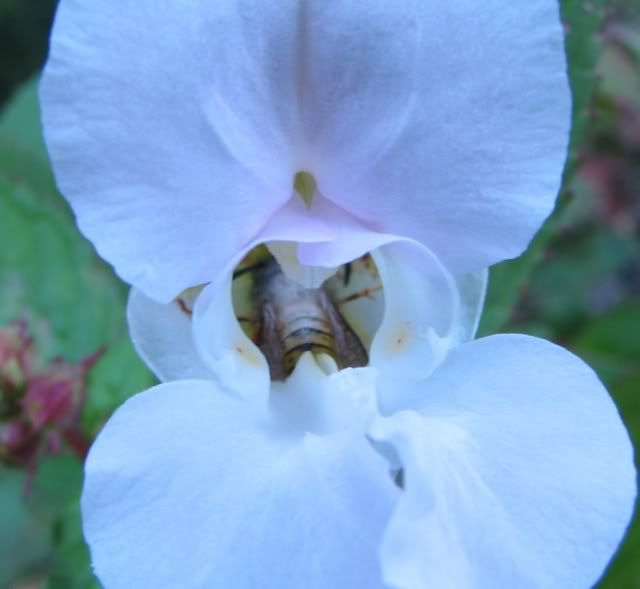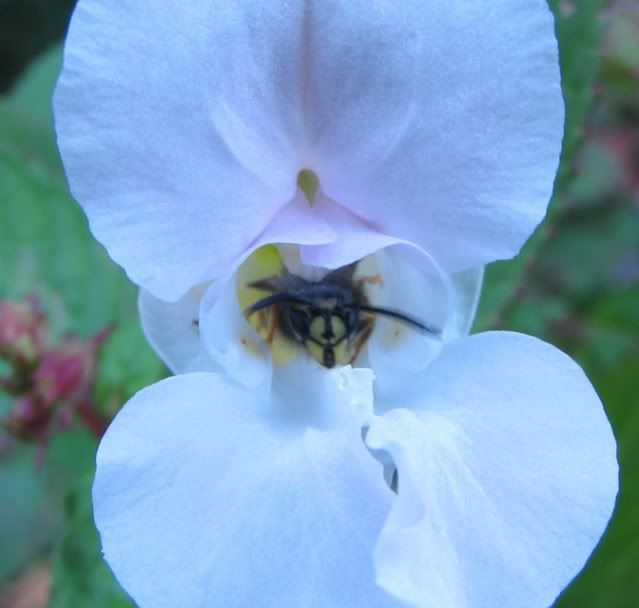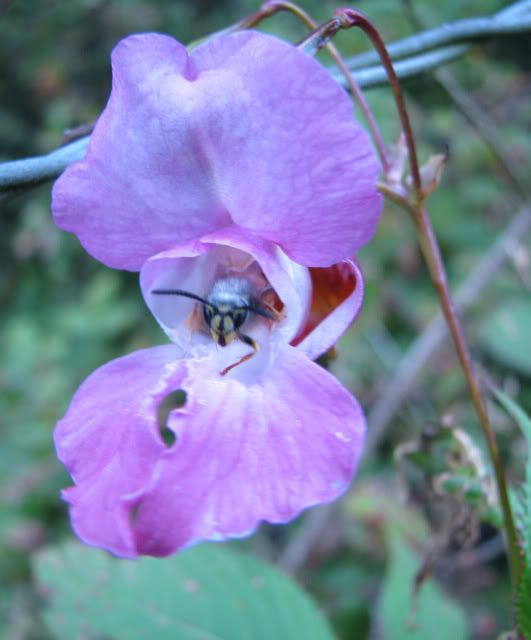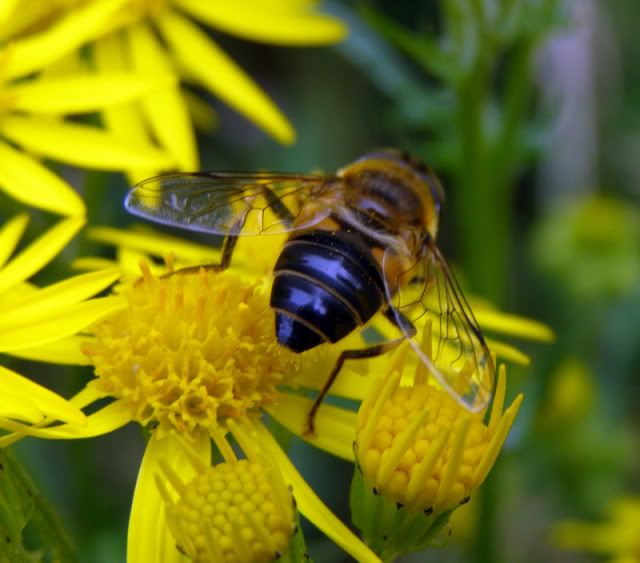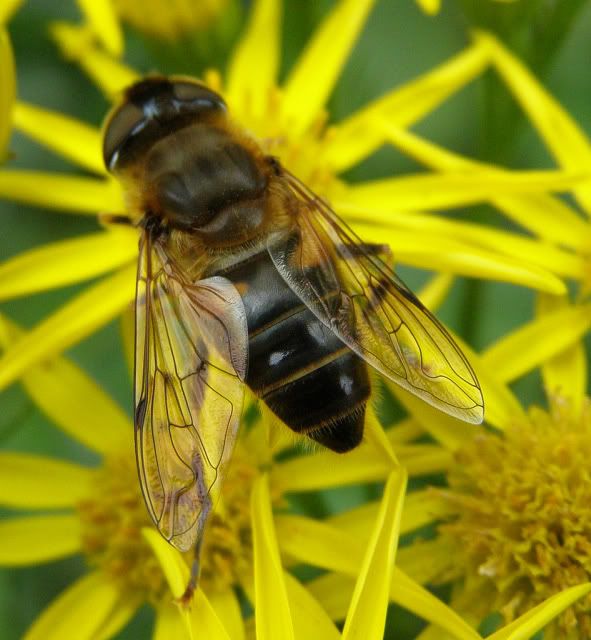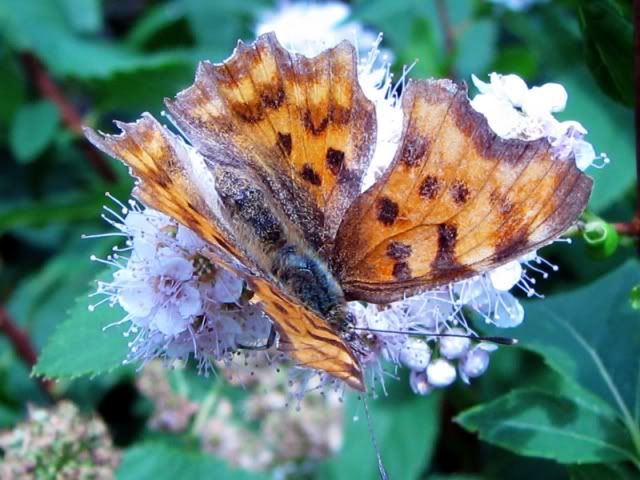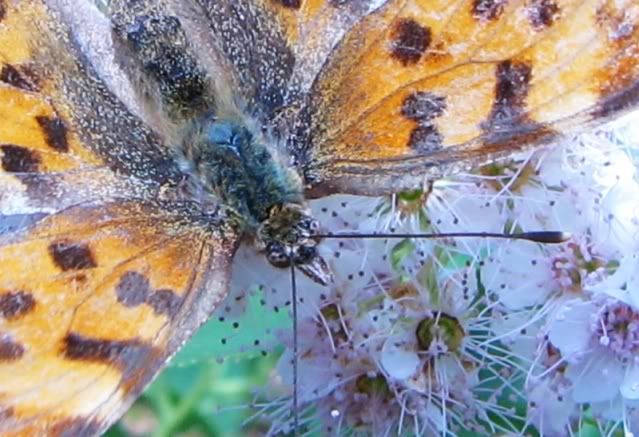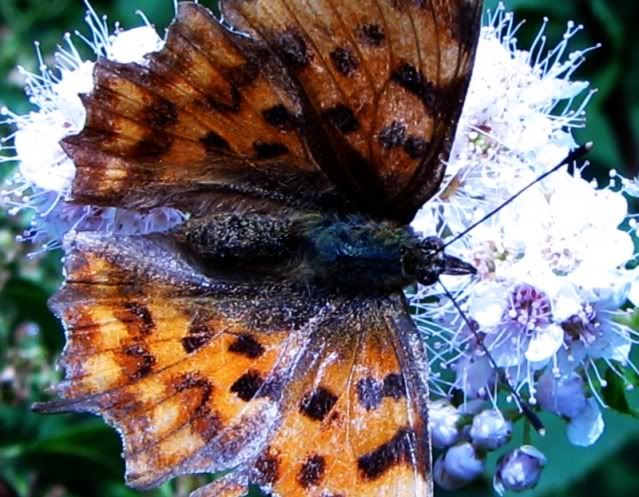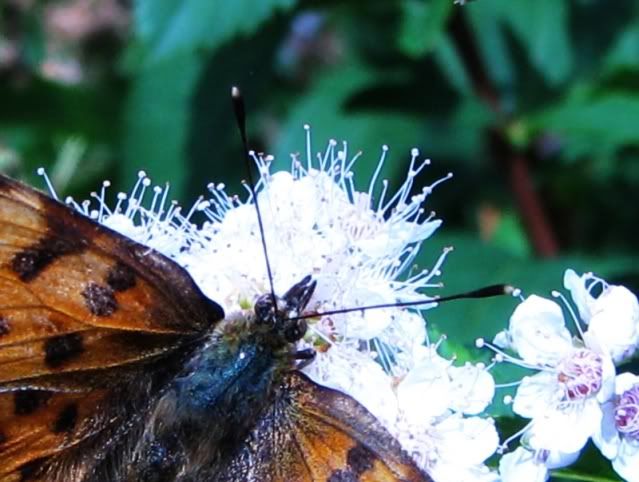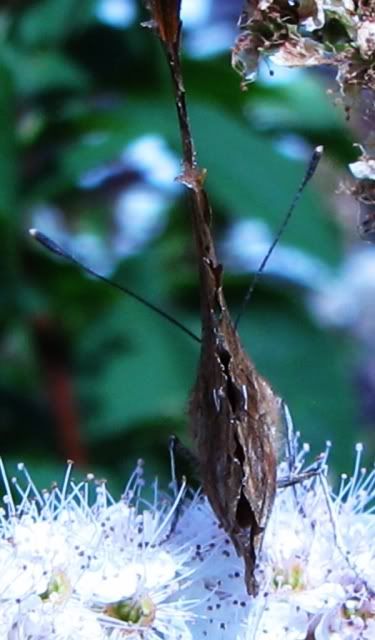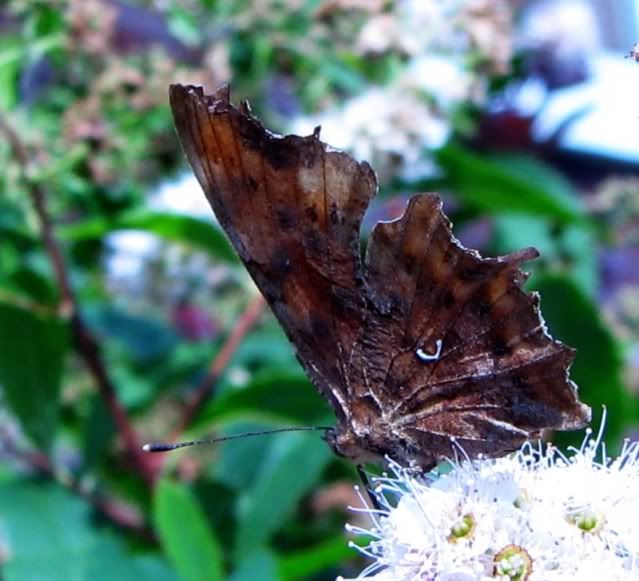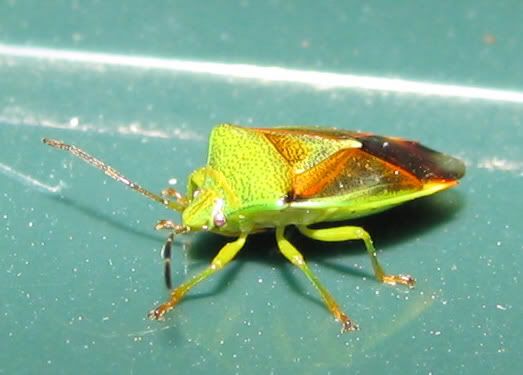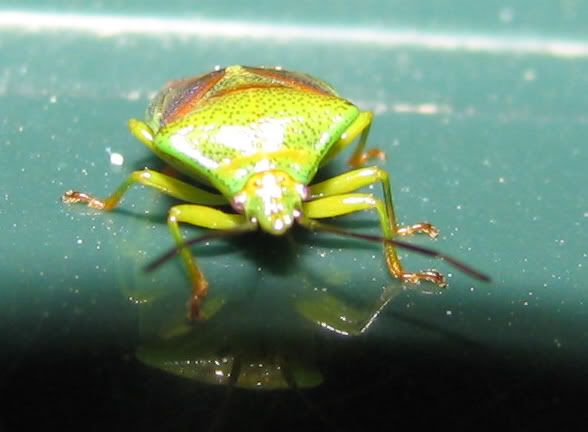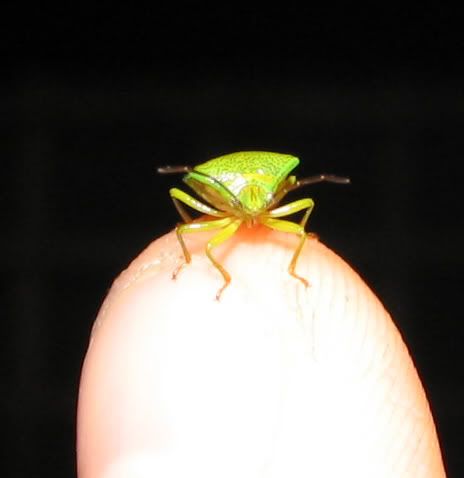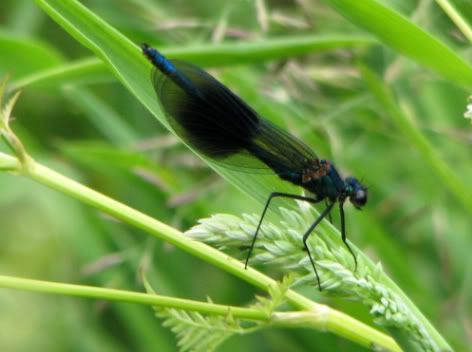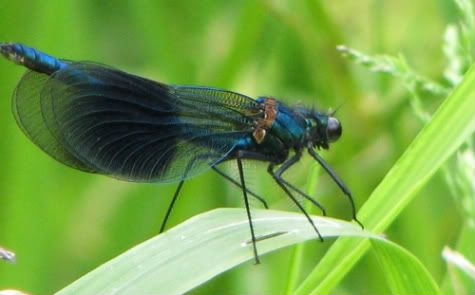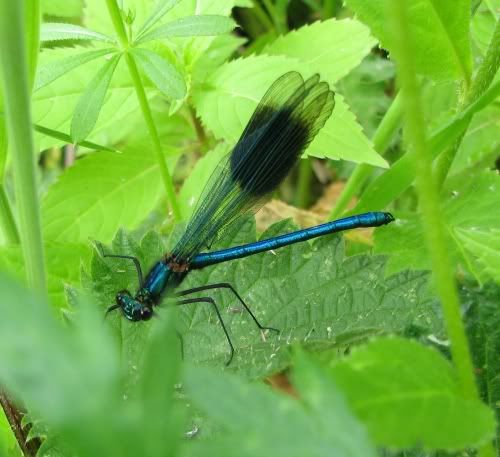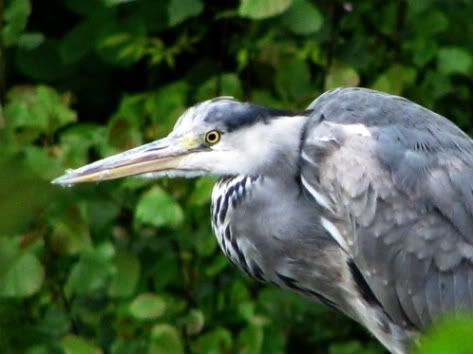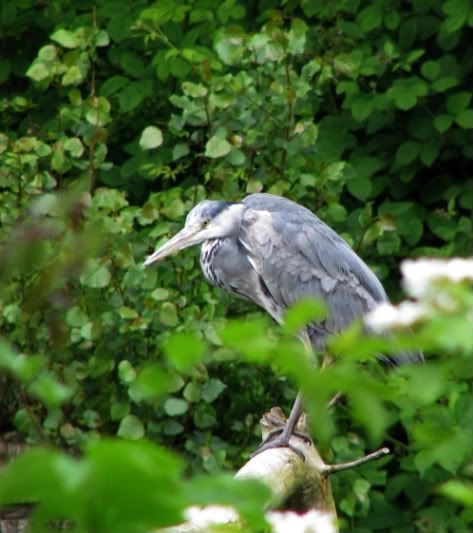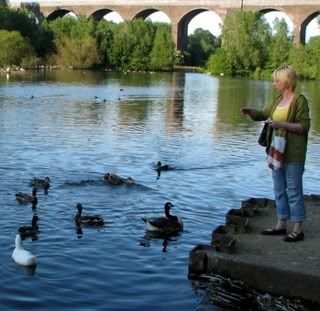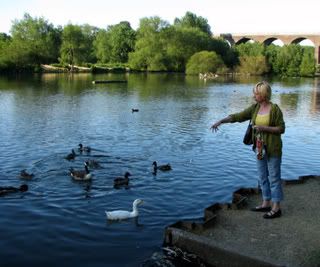Tuesday, 6 October 2009
3 Of - 3
Thursday, 17 September 2009
Walk Around Matley 4
Sunday, 16 August 2009
Drone or Hover Fly
Saturday, 15 August 2009
Comma In Our Garden
Comma Butterfly
Polygonia c-album
The 'Comma' butterfly is one of our more attractive species. This is the first time in over 25 years that I have seen it in my garden. I like this butterfly for two reasons..... its shape and its colour.
When basking in the sun it spreads its wings to reveals a beautiful combination of brown and orange, the markings are similar to our Fritillary butterfles. If you take a good look at the wings you will see the edges have an intricate outline.
This wing design is a great bit of deception and camouflage. As when the wings are closed the butterfly looks just like a dead leaf.
The butterfly has a flexible life cycle, which allows it to take advantage of our weather conditions. It is widespread in southern England and is expanding northwards which is proberly why this is the first time I've had one in the garden.
Look closely at the butterfly’s under wing and you will see the comma-shaped white mark in the centre of its hind wing which is the reason for its common name.
.............
Linda, you asked about Mottram Old Hall and what I knew of it... can you send me an email... or give me a while to visit it and get some pictures... I know little about the place apart from Mottran show is held there. I do however have a couple of books in PDF format I could send you or a link or two for you to download them from.
Thursday, 13 August 2009
Green Shield Bug
Wednesday, 1 July 2009
Reddish Vale 8
Banded Denoiselle
Calopteryx splendens
The males have these dark coloured patches on their wings. These are used in a fluttering dance to attract females. Their bodies are an iridescent blue/green colour.
The females do not have the tinted dark patches on their wings, and their bodies are an iridescent pale green colour. Alas I did not see one of them. The banks of the pond and river had plenty of males about but not a single female was about that I could see.
Grey Heron
The largest European heron. It can stand with neck stretched out, looking for food, or hunch down with its neck bent over its chest. In flight it holds its neck retracted and has large rounded wings. This looks like a youngster to me, it was very tatty looking...
I came across this story last week and thought others who read this blog might find this of interest. Heron Eating A Rabbit
A rare sighting of late on this blog... this is thee Green Backed, Yellow Brested, Blue Legged, Wifelet... other wise know as Jane.





